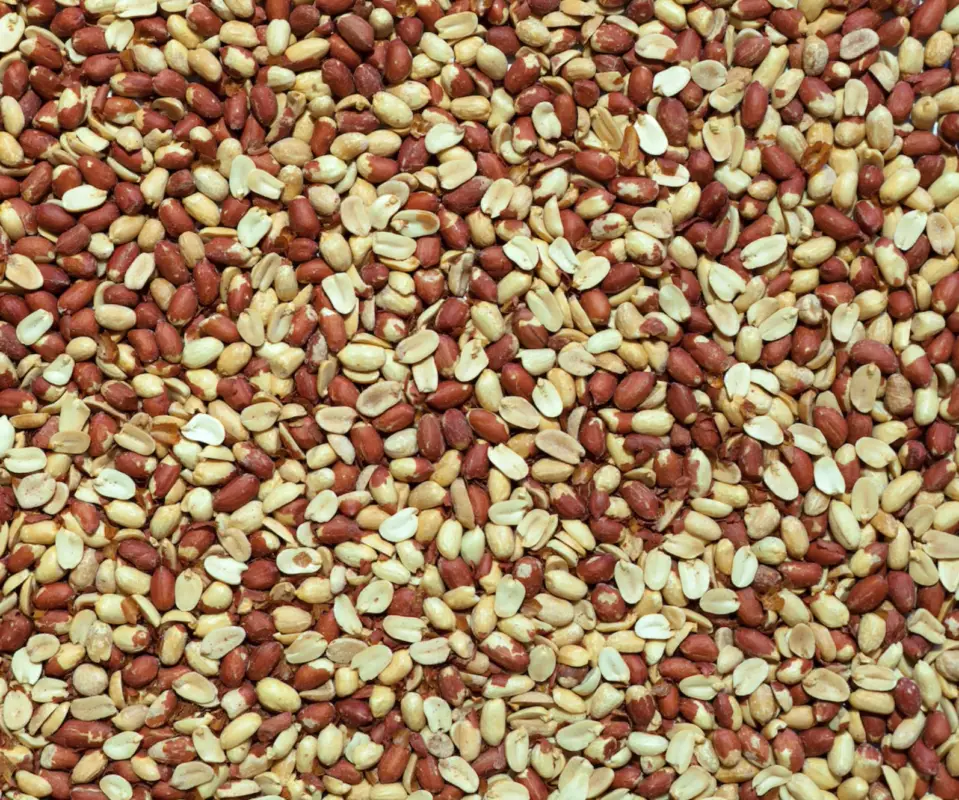Velveeta cheese is a processed cheese product that has been popular in the United States for decades. Its smooth, creamy texture and mild flavor make it a popular ingredient in many dishes, from mac and cheese to dips and sauces. However, some people may want to avoid Velveeta cheese due to its processed nature or for dietary reasons. In these cases, there are many Velveeta cheese substitutes that can be used to achieve a similar texture and flavor.
In this article, we will explore some of the best Velveeta cheese substitutes in queso.

So, if you are looking for a substitute for Velveeta cheese in queso, here is what you can use:
- Cheddar Cheese: Cheddar cheese can be a good substitute for Velveeta cheese in queso. It has a similar flavor and texture, and when melted, it becomes creamy and gooey, just like Velveeta. Use mild or medium cheddar cheese for a milder queso, or use sharp cheddar for a more robust flavor.
- Monterey Jack Cheese: Monterey Jack cheese is another good substitute for Velveeta cheese in queso. It has a creamy texture and a mild flavor that goes well with other ingredients in queso.
- Cream Cheese: Cream cheese can also be used as a substitute for Velveeta cheese in queso. It adds a rich and creamy texture and a tangy flavor that complements the other ingredients in queso.
- Colby Cheese: Colby cheese is another good option for queso. It has a milder flavor than cheddar cheese but is still creamy and gooey when melted.
- American Cheese: American cheese is another processed cheese that can be used as a substitute for Velveeta cheese in queso. It has a mild, creamy flavor and melts easily, making it a popular choice for many cheesy dishes.
- Pepper Jack Cheese: Pepper Jack cheese is a spicy substitute for Velveeta cheese. It has a creamy texture and a spicy flavor that is perfect for making queso, dips, and sauces.
- Nutritional Yeast: Nutritional yeast is a non-dairy substitute for cheese that can be used in a variety of recipes, including queso, mac and cheese, and dips. It has a nutty and cheesy flavor and can be used in a 1:1 ratio with Velveeta cheese. Nutritional yeast is a good option for those who are lactose intolerant or vegan.
Read on to learn more about Velveeta substitutes in queso.
Cheddar Cheese
Cheddar cheese is a popular substitute for Velveeta cheese due to its similar texture and flavor. Cheddar cheese can be melted and blended into a creamy sauce just like Velveeta cheese. The flavor of cheddar cheese is stronger than Velveeta cheese, but it can still be used in many recipes that call for Velveeta cheese.
The taste of cheddar cheese can vary depending on how long it has been aged, with older cheddar cheese having a more pronounced flavor. Young cheddar cheese has a mild flavor with a slightly nutty and buttery taste. As it ages, the cheese becomes sharper and tangier, with a more complex flavor profile that includes notes of caramel and a slightly crumbly texture.
See also: 5 Best Substitutes For Velveeta In Soup
Monterey Jack Cheese
Monterey Jack cheese is a semi-soft, creamy cheese that originated in California in the 19th century. It has a pale yellow color and a smooth, slightly elastic texture that makes it easy to slice or shred. It is a popular cheese for melting and is commonly used in dishes such as queso, quesadillas, enchiladas, and tacos. Monterey Jack cheese is also often used in cheeseburgers, sandwiches, and grilled cheese sandwiches.
Cream Cheese
Cream cheese is a soft, spreadable cheese made from a mixture of milk and cream. It has a smooth, creamy texture and a mild, slightly tangy flavor. Cream cheese is a versatile ingredient that can be used in both sweet and savory dishes, making it a staple in many kitchens. Cream cheese can also be used as a healthier Velveeta alternative in queso thanks to its mild flavor profile.
One of the most common uses for cream cheese is as a spread for bagels, toast, and crackers. It is also a popular ingredient in dips, cheesecakes, and other desserts. Cream cheese can be used to add richness and creaminess to sauces, soups, and casseroles. It can even be used as a substitute for butter or oil in baking recipes to make them moist and tender.
Colby Cheese
Colby cheese is another good substitute for Velveeta cheese. It has a similar texture and can be melted and blended into a creamy sauce. Colby cheese has a milder flavor than cheddar cheese, but it still has enough flavor to be used in many recipes that call for Velveeta cheese.
Colby cheese has a mild and creamy flavor that is slightly tangy and slightly sweet. It is less sharp than cheddar cheese and has a softer, smoother texture. The taste of Colby cheese can be described as buttery and mellow, with a subtle nuttiness that comes from the aging process. It is a versatile cheese that can be used in a variety of dishes, from sandwiches and burgers to casseroles and quiches.
When melted, Colby cheese becomes creamy and gooey, making it a popular choice for grilled cheese sandwiches, mac and cheese, and other dishes that require a melted cheese topping. Overall, Colby cheese is a mild, creamy cheese that is perfect for people who prefer a more subtle cheese flavor.
American Cheese
American cheese is a processed cheese product that is often used in sandwiches and burgers. It has a mild and creamy flavor that makes it a good substitute for Velveeta cheese. American cheese can be melted and used in a variety of recipes that call for Velveeta cheese, including queso.
American cheese is known for its mild flavor and soft, smooth texture. It is commonly used in sandwiches, burgers, and grilled cheese sandwiches, and is often melted on top of other foods to add a creamy, cheesy flavor.
While American cheese is a popular choice for convenience and affordability, it is not considered a high-quality cheese due to its highly processed nature and lack of distinct flavor compared to other types of cheese. However, it remains a staple ingredient in many American comfort foods
Pepper Jack Cheese
Pepper Jack cheese is a spicy substitute for Velveeta cheese. It has a creamy texture and a spicy flavor that can add some heat to recipes. Pepper Jack cheese can be used in place of Velveeta cheese in dishes like queso and dips.
Pepper Jack cheese is a type of semi-soft cheese that originated in the United States. It is a Monterey Jack cheese that has been flavored with peppers, usually a combination of jalapeno and bell peppers, which gives it a slightly spicy taste. Pepper Jack cheese has a pale yellow color with small specks of green and red peppers throughout. Its texture is smooth and creamy, with a slightly elastic quality that makes it easy to slice and melt.
Pepper Jack cheese is often used in Mexican and Tex-Mex cuisine, where its spicy flavor pairs well with bold ingredients like salsa, guacamole, and chili peppers. It is also a popular choice for sandwiches, burgers, and quesadillas, and can be used in recipes calling for cheese, where a little extra heat and flavor are desired.
Nutritional Yeast
Nutritional yeast is a deactivated yeast that is often used as a cheese substitute in vegan and vegetarian recipes. It has a nutty and cheesy flavor and can be used as a substitute for Velveeta cheese in some recipes like queso.
Nutritional yeast can be used to make a vegan queso sauce that is a healthy and delicious alternative to traditional cheese-based queso. Here’s a simple recipe:
Ingredients:
- 1/4 cup nutritional yeast
- 1/4 cup all-purpose flour
- 1 tsp garlic powder
- 1 tsp onion powder
- 1/2 tsp ground cumin
- 1/2 tsp chili powder
- 1/2 tsp paprika
- 1 cup non-dairy milk (such as almond milk or soy milk)
- 1 tbsp olive oil
- Salt and pepper, to taste
Instructions:
- In a small bowl, whisk together the nutritional yeast, flour, garlic powder, onion powder, cumin, chili powder, and paprika.
- In a small saucepan, heat the olive oil over medium heat. Add the spice mixture and stir to combine.
- Gradually whisk in the non-dairy milk, stirring constantly to prevent lumps from forming.
- Continue cooking and stirring until the mixture thickens and begins to bubble, about 5-7 minutes.
- Remove from heat and season with salt and pepper to taste.
This vegan queso can be served with tortilla chips, drizzled over tacos or burritos, or used as a dip for vegetables. It is a great source of protein, fiber, and B vitamins, making it a nutritious and tasty addition to any meal.




